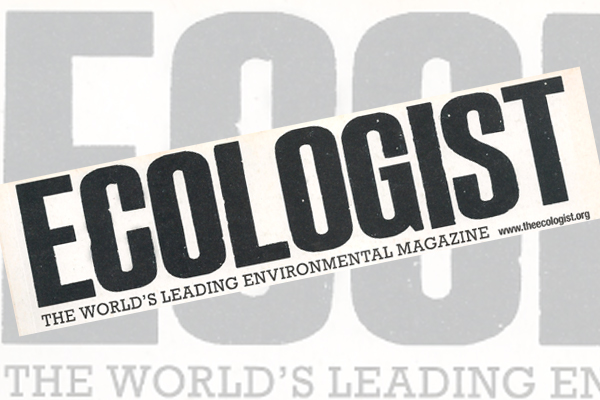Editorial: Agents of Destruction

It was a classic Ecologist story.
A multinational company breaking the law, dumping toxic waste onto the land, threatening the ecosystem and the well-being of those living in the area. We welcomed Douglas Gowan and his evidence, welcomed the chance to cross swords with Monsanto again. We welcomed the opportunity to take on a story that many journalists knew but few were prepared to write about, either because it was too depressing or because the story couldn’t be told in the paltry number of column inches they were prepared to give it.
Readers, when they see a finished article are generally unaware of the groundwork that goes into a major investigation. They don’t hear the often vocal debates around our office lunch table. They are not aware of the head-scratching, nit-picking and late nights trying to take the ‘facts’ – a writhing bag of snakes – and lay them out in a straight line. It was clear early on that the story of Brofiscin quarry was complex and that there were many perplexing and unanswered questions. But as events unfolded, it became equally clear there was a much darker side to it, involving a government agency whose job should be to protect the public from such catastrophes (see page 12).
The Environment Agency is the leading public body with a mandate to protect and improve the environment in England and Wales. It is the second largest agency of its type in the world and the largest in Europe. At its launch on April 1st 1996, Ed Gallagher, Chief Executive of the Agency at the time, said that the agency would be ‘one of the largest and most powerful environmental regulators in the world’. Eleven years on we’ve ended up with an agency with no clear purpose and no will to act. An agency that has never brought a prosecution against a major polluter. An agency, it would seem that puts the financial interests of industry ahead of the environment.
This fact has been apparent for many years. Indeed in 2002, a select committee report severely criticised its performance on several counts including the lack of a coherent vision, its failure as a regulator, its low public profile and its lack of accountability.
Last year a similar report noted the agency’s difficulties juggling its conflicting roles of industry regulator and environmental champion, and commented that it seemed unprepared to cope effectively with the complex challenges that climate change poses. We agree, but government inquiries into government agencies can only ever achieve so much and are always couched in the language of compromise.
The fiasco at Brofiscin has brought the Ecologist’s own view of the Environment Agency sharply into focus. It’s not a pretty sight.
Documents obtained by Douglas Gowan under the Freedom of Information Act paint a picture of a disorganised and paranoid organisation more concerned with manipulating the truth than protecting the environment. When a publicly funded agency apparently spends its time tapping phones and intercepting emails, in order to discredit an expert witness who could help prosecute a major polluter, it has ceased to be an effective advocate.
What is needed is an independent inquiry into Brofiscin as well as a full and independent accounting of the agency’s performance to date, including how the agency operates, what its goals are, its prosecution record and any conflicts of interest its executives, scientists and investigators may have with industry. It is entirely conceivable that the conclusions of such an inquiry would be that no mere facelift or reorganisation will set things right. Only shutting the Environment Agency down and starting afresh will give us a hope of getting the protection we need at governmental level against those who would place the preservation of a healthy bottom line over the preservation of the natural world.
- This editorial first appeared in the June 2007 edition of the Ecologist.












